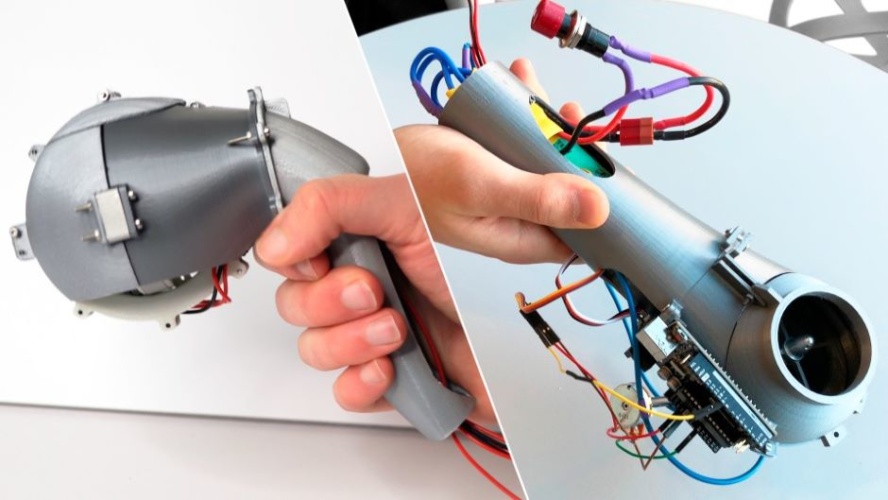Many visually impaired people are content to navigate with tools such as canes, but some are unable to utilise the services of a guide dog due to factors such as allergies, expense or house size.
Low-cost radar could help visually impaired
Midas touch – the technologies driving the haptics revolution
Now, Anthony Camu, a final year Industrial Design and Technology student at Loughborough University, has taken inspiration from virtual reality gaming consoles to design a product that replicates a guide dog’s functions.
Camu’s prototype ‘Theia’ is a portable and concealable handheld device that guides users through outdoor environments and large indoor spaces with minimal user input.
In a statement, Camu said Theia – named after the titan goddess of sight – will programme routes to reach destinations and avoids accidents along the way.
To use Theia, a user would input a voice command. As an internet of things (IOT) device, Theia then processes real-time data available online, such as traffic density - pedestrians and cars - and weather, to guide users to their destinations.
While guiding a user from A to B, Anthony believes it will assist also with tackling interactions such as elevators, stairs, entrances, shops, and pedestrian crossings.
Theia will also have a fail-safe procedure for high-risk scenarios, such as crossing busy intersections. When a user is close to a crossing, Theia will push them back and enter ‘manual mode’. Situations like these encourage the user to maintain a level of awareness and control when it matters the most, Camu said.

Camu aims to combine Lidar and cameras so Theia can capture a three-dimensional image of the users’ surroundings. Powerful on-board processors then determine the best path to take and separate routes into individual commands, such as ‘bear left at 1.4m/s’.
Theia will communicate complex walking maneuverers and move users’ hands in open space using a form of force feedback that involves a control moment gyroscope (CMG). The ‘leading’ sensation could be compared to holding a guide dog’s brace, so users holding Theia would also be able to feel the subtleties of speed, direction, and vibration and feel it pulling them along.
Anthony has successfully created prototypes that were used to experiment with momentum to manipulate the movement of a person’s hand. Following user testing, a unique system of force and resistance was found, which communicates complex walking maneuvers in real time.
Camu said: “I know this is a grand vision, but I hope people can see the positive effects Theia could have on the blind community.
“The goal of many non-sighted people is to be independent and live a normal life but unfortunately, many who endure vision loss feel excluded from situations and activities which many people take for granted.
“Theia has the capacity to expand a blind person’s comfort zones and possibilities, broaden their horizons and allow them to think less about walking and more about what’s waiting for them at the end of the route.”





Glasgow trial explores AR cues for autonomous road safety
They've ploughed into a few vulnerable road users in the past. Making that less likely will make it spectacularly easy to stop the traffic for...